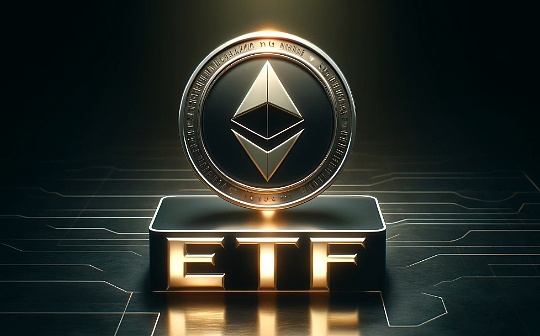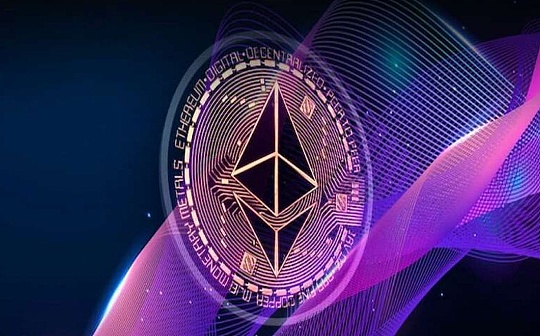
Author: GlassNode, Alice Kohn; Compilation: Deng Tong, Bit Chain Vision Realm
summary
-
The Dencun on Ethereum upgrades the new data storage capacity, which aims to reduce the cost of the Layer 2 extension solution.
-
The upgrade has also implemented a fixed restrictions on the authenticants to manage the growth of the authentication set and maintain efficient node communication.
-
This change may reduce the new issuance rate of Ethereum, which affects Ethereum’s tokens.This may lead to a decrease in Ethereum supply.
Reduce the cost of the expansion solution
On Wednesday, March 13, Ethereum has undergone another major update.Cancun-Deneb (Dencun) upgrade has changed major changes to the Rollup infrastructure of Ethereum.The upgrade also made some modifications on the pledged pool of Ethereum to improve node communication and network stability.
In recent years, various solutions have emerged to help Ethereum network processing more transactions.Roll-up is a blockchain that uses a separate execution environment to perform transactions in the Ethereum blockchain.They aggregate batch transactions when Rollup, anchor them into a single transaction, and then submit to the Ethereum blockchain and verify it.
The ROLL-UP solution has become more and more popular in the past two years. The use of the two main extensions of Arbitrum and Optimism has increased the daily active address of 150,000 and 100,000, respectively.At the same time, the active number of Ethereum main network is still the largest, with more than 400,000 active addresses every day.

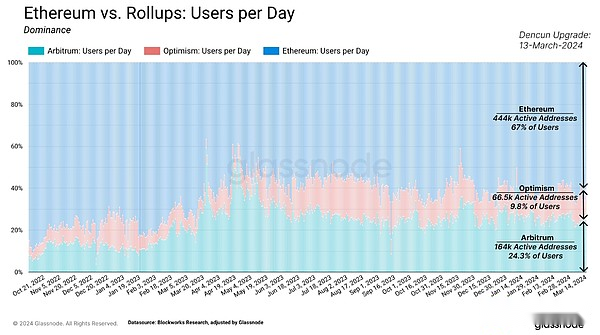
The main feature of the DENCUN upgrade is to create additional data storage capacity on the Ethereum network.It introduces a new type of transaction that can carry big packets (called Blob).
BLOB temporarily stores on the consensus layer rather than the execution layer, which will reduce the cost cost of Ethereum network and Rollup itself.As shown in the table below, the transaction cost after upgrading has dropped sharply. The transaction costs of Optimism and StarkNet are even less than 1 cents.

Standardization is that the US dollar enables us to understand how the rolling cost is different from the main network cost.Since its launch, Roll-ups has provided cheaper and smaller costs, and the cost of each transaction of Arbitrum and Optimism is between $ 0.10 and $ 0.30.In contrast, the main chain cost of the Ethereum at the same time is between $ 2 and $ 7.
During the frequent activity, the demand for the Ethereum block space has influx in large quantities, and the cost may rise to more than $ 30.Before Dencun, the Rollup cost depends on the main chain cost to a certain extent, and in similar circumstances, its cost is increased to $ 2.50.

Cumulative costs of high volatility in the Ethereum cost market often depend on the overall more expensive and challenging user experience.These Layer 2 solutions also affect the Ethereum market by increasing the new demand sources of block space.According to a report from Fidelity, the transaction costs paid by various Layer 2 chains are usually about 10% of the total cost of Ethereum main online payment.
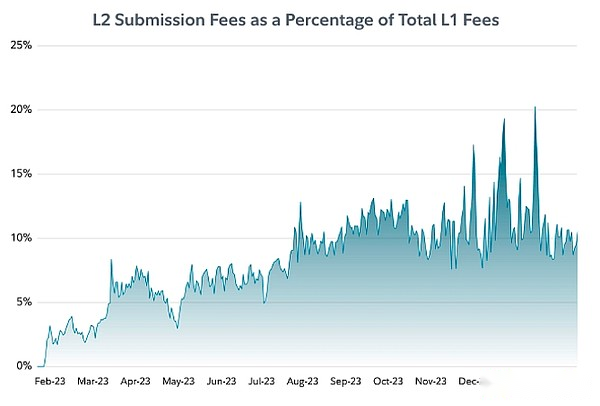
Source: Fidelity Digital Assets
Through the Dencun upgrade, the Layer 2 anchor the transaction into BLOB to a large extent to improve the user experience and reduce the cost, and keep it consistent with the Ethereum Foundation centered on the Rollup.It is hoped that lower trading costs will encourage more users to turn to Rollup, thereby increasing the total transaction throughput based on Ethereum.This strategy aims to improve scalability without affecting the decentralization and security of the main chain.
Shortly after the launch of the first expansion solution in Ethereum, we observed that the average transaction throughput of mid -2021 increased to 105 transactions (TPS) per second.Among them, ROLL-Up accounts for about 46 TPS, accounting for 44%of the total.
This provides a preliminary signs of successful roadmaps and similar Layer 2 extension solutions for ROLLUP.However, compared with Ethereum’s biggest competitor Solana (average about 2.6K TPS), there is still significant differences, which is largely modular (eg, Ethereum) and overall (such as Solana) design structure functions.Essence

Pledge pool adjustment
The DENCUN upgrade also introduces new technical changes. These changes have affected the pledges on Ethereum, mainly to improve the user experience:
-
The permanent and effective signature exit has strengthened the user experience of the entrusted pledged participants (such as the liquidity pledge pool).At present, authorized users to withdraw from the signature key from the pledged pool are responsible for the verification operator.This arrangement makes the owner of the equity depend on the goodwill of the verification operator when he wants to exit his position.After the DENCUN upgrade, the verification operator can sign a voluntary exit in advance, allowing the owner of the equity to unilaterally withdraw its rights and interests.
-
Increasing the proof window extended the verification person to vote from 6.4 minutes to 12.8 minutes.This allows collecting more proofs to accelerate the block confirmation process.At present, the number of certificates is about 759,000 per day.

The fixed restrictions on the new verifications have also been added to reduce the growth of the authentication set.At present, the loss restrictions stipulate how many new authenticists can enter or exit the pledge pool every day.This limit increases with the definition of the total number of active verification device.
After the upgrade of Shanghai, the number of active verifications increased significantly, with an average of new authenticants +1347.However, with the increase of the number of verificationrs, people notice that side effects are slowing the speed of node communication.
Dencun upgrades have now introduced restrictions on 8 new authenticants per period of about 6.4 minutes to replace the loss limit function.

The slowdown of the validator set and the increase in effective pledge balance have a secondary impact on the tokens of Ethereum.At present, ETH’s distribution speed depends on the number of active verifications. Because fewer and fewer people can enter the pledge pool now, it may slow down the release of new ETH issuance.
Since the upgrade of Shanghai, with the increase of the authentication set, the circulation has increased from ETH 1183/day to ETH 2554/day.Although it was very early, shortly after Dencun upgraded, we saw the third decline in the circulation rate.
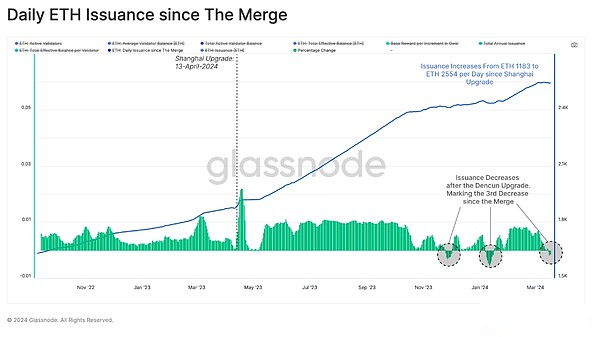
The speed of issuance may slow down or the net supply volume is reduced, because the number of ETH burning through transaction costs is more than the number of newly issued ETH.Since the merger, we have observed that the total circulation supply of ETH has decreased by 410,000 ETH.
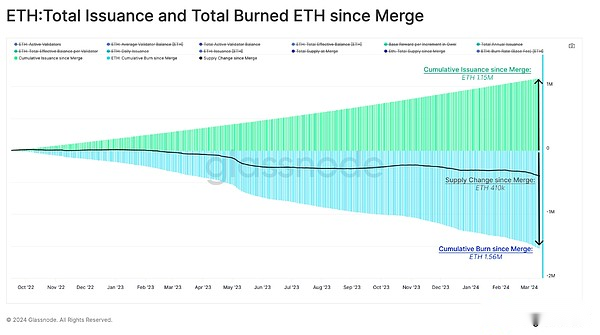
The comprehensive impact of Dencun upgrades on ETH supply still needs to be observed, because there are some changes in each other:
-
Layer 2 anchor transaction has now been transferred to the BLOB data structure, eliminating about 10% of the cost congestion pressure.This may lead to a slight decrease in ETH destruction.
-
The reduction of Layer 2 costs may attract more people to use Ethereum main chain and expansion solutions, which may increase cost pressure.
-
Due to the decrease in the number of new authenticants who can enter the pledge pool, the growth rate of issuance may be reduced.
Throughout its history, Ethereum has experienced six major updates, but not all updates are directly targeted at ETH supply changes.However, from the last four upgrades, it can be clearly seen that the growth of ETH supply has slowed down.After the merger, it was even slightly negative.The figure below shows the relative changes of these different upgrade events and the supply of ETH circulation.

Summarize
Dencun upgrades to create additional data storage capacity through BLOB transactions, which has greatly enhanced the Ethereum network.The upgrade effectively reduces the cost of various extension solutions, thereby improving the user experience, and may increase the total transaction throughput by encouraging the use of Rollup.
This upgrade may also affect the tokens of Ethereum by restricting the entry of new authenticists, which will slow down the growth of the authentication set, thereby slowing the speed of new ETH issuance.Although the decrease in circulation means that the supply may be reduced, itThe new BLOB structure may also lead to a reduction in transactions of the execution layer, thereby reducing the destruction of ETH and which may reduce the impact of the reduction in circulation.
All in all, this development continues the trend of Ethereum, that is, to slow down its supply growth and execute the Rollup -centric roadmap.It can be seen that the last four upgrades have led to the deceleration of ETH supply since the merger and even decreased slightly.

